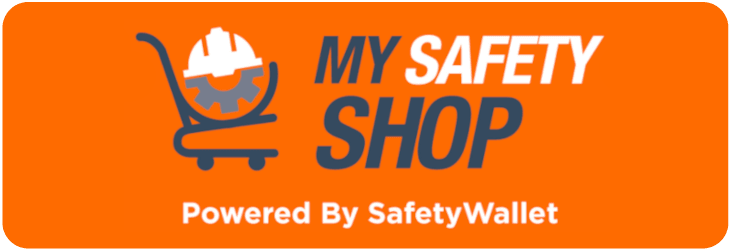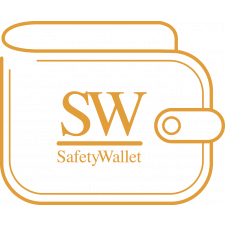Health and Safety Risk Assessment and OHSA
Risk Assessment and OHSA
The Occupational Health and Safety Act 85 of 1993 amongst other relevant regulation provides employers with all the tools that they need to ensure that the workplace is healthy and safe.
The main goal that an Occupational Health and Safety programme, in conjunction with an effective health and safety risk assessment and OHSA compliance, serves is to prevent injuries, illnesses, and fatalities in the workplace in addition to prevent suffering and financial hardship that may result of these events for employees, their families, and employers alike.
Recommended safety standards and practices use a proactive approach towards managing workplace health and safety. There are traditional approaches that often take a reactive stance, that is, addressing problems after an incident or accident has occurred, resulting in new standards and practices being implemented to prevent recurrence.
Newer practices and standards recognise that finding and fixing hazards before they result in a risk and subsequent injury and/or incident is a more effective approach. The idea revolves around starting with a basic programme along with simple goals, and to grow and improve from there.
When there is focus on achieving goals, monitoring performance, and evaluating outcomes, the workplace can progress along a path to higher levels of health and safety achievement.
Employers will discover that by implementing the recommended practices results in a variety of health and safety benefits to help the organisation:
- Prevent injuries and illnesses in the workplace.
- Improve compliance with all relevant and applicable legislation and regulations.
- Reduce costs and reduce COID tariffs and fees.
- Engage workers and enhance their social responsibility goals.
- Increase productivity as well as enhance overall business operations.
Hazard Identification and Risk Assessment
When health and safety risk assessments and OHSA compliance forms part of a structured Occupational Health and Safety Programme, employers can more adequately ensure that their employees are safeguarded against harm.
Safter in any organisation, despite its operations, works best if the people who are in charge take a leading role in effectively managing the health and safety of employees, visitors to the site, and any other persons who may be affected by the employer’s activities.
There are numerous business enterprises who have proven that adequate safety management leads to an increase in productivity. In having a proper safety management programme, employers can reduce the likelihood of injuries and other incidents which may have costly, time-consuming, stressful, and inconvenient consequences.
The Safety Pyramid – Explained
During 2003, a study was conducted to demonstrate a large difference in the ratio of serious accidents as well as near misses. The study found that for every fatality that occurs, there are at least 300,000 at-risk behaviours which can be defined as activities which are not consistent with the safety programme, training, or components on machinery.
These behaviours can include the bypassing of safety guards on machinery, eliminating a safety step during the production process, or numerous other factors. By managing at-risk behaviours and near misses, the chance of fatalities can be reduced and eliminated as there is a lower frequency of at-risk behaviours. This can be achieved through training, frequent inspections, risk assessments, engineering and administrative controls, and other measures.
What is a hazard?
A hazard can simply be defined as a condition or a set of circumstances which present a potential for harm. Hazards can be divided into two broad categories, namely:
- Health hazards, which are the cause of occupational illnesses and diseases.
- Safety hazards, which cause physical harm such as injuries.
Hazard Identification
Hazard identification involves the process associated with the identification of all hazards in the work environment. There is no set method for grouping injury or illness hazards as most may overlap into different categories.
Some common hazards include:
- Storage facilities
- Electrical systems
- Machine and equipment operation
- Hazardous substances
- Noise
- Confined spaces
- Heights, and several others.
How to start assessing the safety management programme
- Carry out frequent hazard assessment surveys of operations, equipment, substances, and tasks.
- Create a system for recording injuries, near misses, and identified hazards.
- Evaluate safe procedures for tasks.
- Evaluate safety training and supervision.
- Evaluate the protective clothing and equipment (PPE) for different tasks.
- Evaluate the training provided for new equipment and machinery.
- Review safety discussions between employers, contractors, and employees.
- Evaluate whether safety information is readily available.
- Inspect the availability of regulations to employees.
Develop a plan
A written plan must be developed, and an Occupational Health and Safety Programme implemented. The programme must be discussed with all employees, contractors, subcontractors, and any other relevant parties. There must be a system incorporated for:
- Hazard identification
- Risk assessment
- Risk control.
Employers must ensure that employees and all other relevant parties are familiar with the programme along with safe work procedures, and the current legal health and safety requirements.
Other components include:
- The provision of safety information.
- Orientation or induction for new employees and visitors.
- Safety training on new procedures.
- Recordkeeping of injuries, near misses, and potential hazards.
How can hazards be identified effectively?
- Observation
- Material Safety Data Sheets (MSDS)
- Hazard and risk surveys
- Records of analysis
- Discussion groups
- Safety Audits
- Information
- Consumer information
- Regulations as well as best practices
Assess the risk
Once a hazard has been identified, the likelihood and the potential severity of injury or harm must be assessed before determining the best way to minimise the risk. High risk hazards must be addressed urgently followed by low-risk situations.
Make the necessary changes
Employers must consider the following measures which are listed in order of importance:
- Removal of the hazard at the source.
- Substitution with something less hazardous.
- Isolation of the hazardous process, item, or substance.
- Applying engineering controls.
- Apply administrative controls such as the adoption of safe work procedures, providing training, and supervision to minimise the risk.
- Where other means are not adequate or reasonably practicable, provide PPE.
- Lastly, implement and monitor the controls that are chosen.
It is recommended that one, more, or a combination of the controls must be chosen and that the changes be made as soon as it is possible, before the hazard can lead to an injury, incident, or accident.
Review the changes
To ensure that risk has been minimised, and that additional hazards have not been created, the new safety measures must be tested carefully before work is commenced. There must be consultation with the employer and others in the workplace to reach a safe decision on how to proceed.
Job hazard analysis
This is a technique which specifically focuses on job tasks to identify hazards before they occur. The analysis focuses on the relationship between the worker, the task, and the tools in relation to the work environment. Ideally, after an uncontrolled hazard is identified, steps must be taken to eliminate or reduce them to where they become an acceptable risk.
A job hazard analysis can be conducted on any of the following:
- Tasks with a high injury or illness rate.
- Tasks that have the potential to cause severe or disabling injuries or illnesses.
- Tasks in which one simple human error could lead to a severe accident, incident, or injury.
- New tasks or tasks which have undergone changes in process and procedures.
- Tasks which are complex enough to require written instructions.
Where to start
- Involve employees
- Review accident and incident history
- Conduct a preliminary job review
- List, rank, and set the priorities for hazardous tasks
- Outline the steps or tasks
How does SafetyWallet support its subscribers?
SafetyWallet, in partnership with MAKROSAFE and OHS Online, ensures that subscribers can obtain the highest level of compliance with the Occupational Health and Safety Act, all other Regulations, and more.
MAKROSAFE have been assisting clients for more than 23 years with recommendations and risk assessments for a hazard-free environment.
MAKROSAFE / SAFETYWALLET / MY SAFETY SHOP are all in Partnership.
Through the assistance and support in the health and safety programme of the subscriber, SafetyWallet helps subscribers with the health and safety risk assessments that must be conducted to ensure that subscribers are compliant in providing a healthy and safe working environment.
Click on the image below to find a SafetyWallet Solution that suits your business (Branch/Site specific) and get the 21 benefits along with the subscription:
Keeping your workplace legally Health and Safety Compliant may seem like a daunting task. At MAKROSAFE, we have an experienced team of OHS experts available to assist in keeping your company Health and Safety Compliant according to South African Occupational Health and Safety Act 85 of 1993 and Regulations.
The MAKROSAFE Health and Safety Risk Control Package will assist you with your Risk Management Programme.
By signing up with our Health and Safety Risk Control Package, MAKROSAFE will assist you with your Risk Management journey.

-Health-and-Safety-Risk-Assessment-and-OHSA%CE%93%C3%87%C3%B4-Introduction-Banner-1.jpg)
Leave a comment